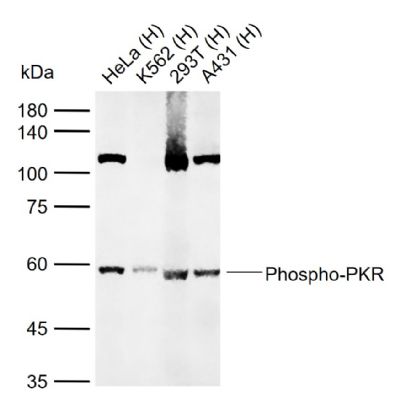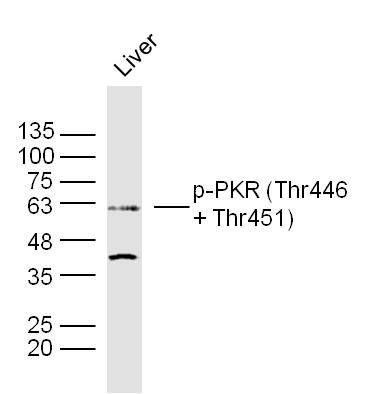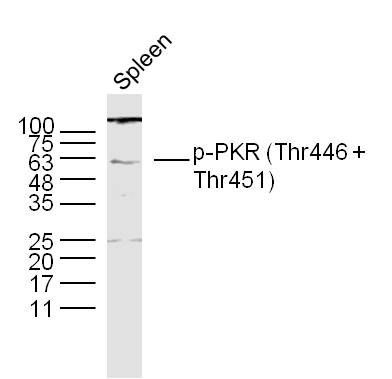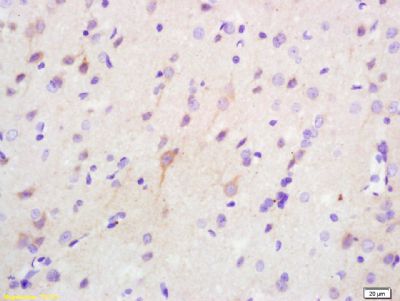Sample:
Lane 1: Human HeLa cell lysates
Lane 2: Human K562 cell lysates
Lane 3: Human 293T cell lysates
Lane 4: Human A431 cell lysates
Primary: Anti-Phospho-PKR (Thr446 + Thr451) (SL3337R) at 1/1000 dilution
Secondary: IRDye800CW Goat Anti-Rabbit IgG at 1/20000 dilution
Predicted band size: 62 kDa
Observed band size: 60 kDa
Tissue/cell: rat brain tissue; 4% Paraformaldehyde-fixed and paraffin-embedded;
Antigen retrieval: citrate buffer ( 0.01M, pH 6.0 ), Boiling bathing for 15min; Block endogenous peroxidase by 3% Hydrogen peroxide for 30min; Blocking buffer (normal goat serum,SLC0005) at 37℃ for 20 min;
Incubation: Anti-Phospho-PKR(Thr446+Thr451) Polyclonal Antibody, Unconjugated(SL3337R) 1:200, overnight at 4°C, followed by conjugation to the secondary antibody(SP-0023) and DAB(SLC0010) staining



